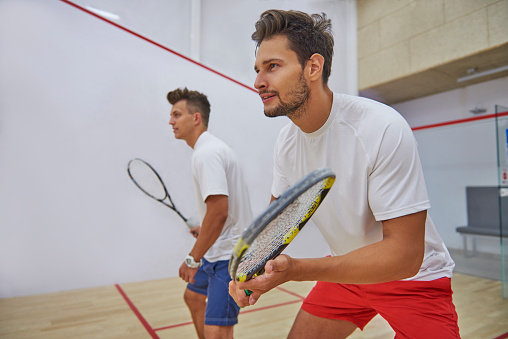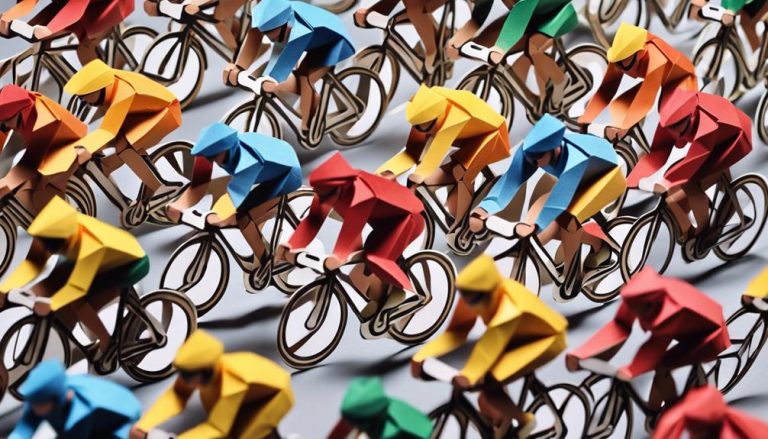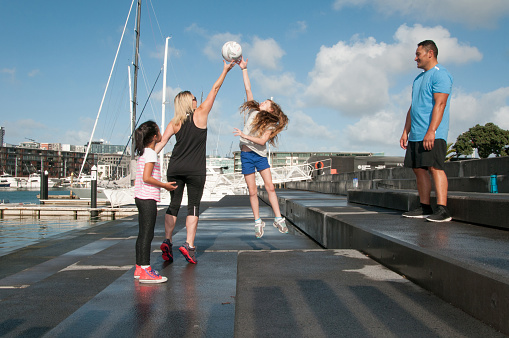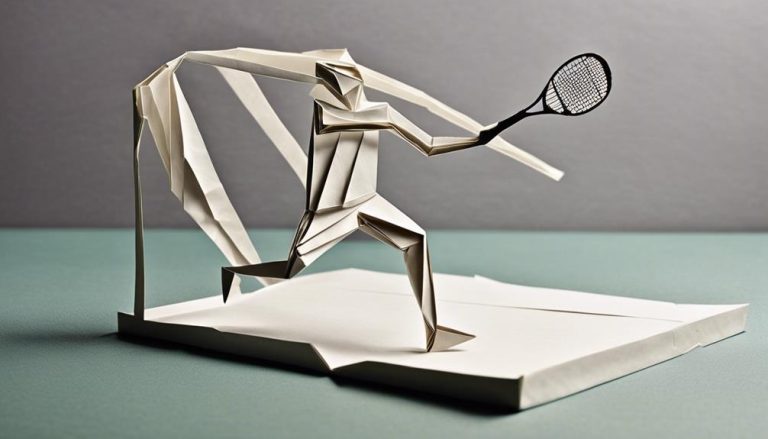General Rules of Roller Skating
So, you thought strapping wheels to your feet and gliding around would be a breeze? Think again. Roller skating may seem like child's play, but before you zip off into the sunset, there are a few essential rules you need to grasp to guarantee your safety and the safety of those around you. From mastering the art of speed control to understanding the subtle language of hand signals, every aspect of roller skating demands your attention and skill. Stick around to uncover the key to a smooth and enjoyable skating experience.
Safety Gear
When roller skating, making sure you have the proper safety gear is essential for protecting yourself from potential injuries. One of the most important pieces of safety gear is a helmet. Wearing a helmet can prevent serious head injuries in case of falls or collisions. Make sure your helmet fits snugly and sits level on your head to provide the best protection.
In addition to a helmet, wrist guards are vital for protecting your wrists from fractures or sprains. Falling forward is common in roller skating, and wearing wrist guards can greatly reduce the risk of wrist injuries. Knee pads are also essential as they protect your knees from scrapes, bruises, and more severe injuries like fractures. Properly fitting knee pads will give you the confidence to skate more freely without the fear of hurting your knees.
When selecting protective gear, make sure that it meets safety standards and fits you well. Ill-fitting gear can be just as dangerous as not wearing any gear at all. Investing in high-quality safety gear is investing in your well-being on the rink. Remember, safety gear is not just for beginners but for skaters of all levels. Prioritize your safety so you can enjoy the thrill of roller skating without unnecessary risks.
Skating Etiquette
When it comes to roller skating etiquette, it is crucial to respect your fellow skaters on the rink. Proper communication is key to avoiding collisions and ensuring everyone has a good time. Remember to always follow safety guidelines to keep yourself and others safe while enjoying this fun activity.
Respect Fellow Skaters
Exhibiting courteous behavior towards your fellow skaters is important when practicing skating etiquette. When at skating competitions or practicing group routines, it's vital to show respect to others on the rink. Here are some essential tips to make sure you uphold good sportsmanship and create a positive skating environment for everyone:
- Be mindful of your surroundings: Avoid sudden stops or erratic movements that could potentially endanger other skaters.
- Give space when needed: Respect the personal space of others and avoid crowding or cutting off fellow skaters.
- Communicate effectively: Use hand signals or verbal cues to alert others of your intentions or movements on the rink.
- Offer help when possible: If you see a skater in need or struggling, lend a helping hand to make certain everyone enjoys their time on the rink.
Communicate on Rink
To effectively navigate the rink and guarantee safety for all skaters, clear communication among individuals is essential. Proper communication through rink signals and verbal cues helps create a harmonious skating environment. When skating, it's important to establish a skating buddy to watch out for each other and communicate effectively. Use safety calls like 'Skater on your left' or 'Stopping' to alert others about your movements. Being vocal and attentive can prevent collisions and guarantee a smooth skating experience for everyone on the rink. Remember, communication is key to a successful and enjoyable time on the roller skating rink. So, don't hesitate to speak up and listen actively while skating to promote a safe and fun environment.
Follow Safety Guidelines
Ensuring adherence to safety guidelines while roller skating is paramount for a secure and enjoyable skating experience. To make the most of your time on wheels, remember these key points:
- Proper Technique: Maintain balance, bend your knees, and keep your arms slightly in front of you for stability.
- Injury Prevention: Wear appropriate safety gear such as helmets, knee pads, elbow pads, and wrist guards.
- Be Mindful of Others: Avoid sudden stops, skate at a safe speed, and yield to skaters in front of you.
- Stay Alert: Keep an eye out for obstacles, other skaters, and changes in the skating surface.
Speed Control
To regulate your speed effectively while roller skating, it is essential to practice controlling your momentum and balance through proper body positioning and technique. Utilizing practice drills can help you improve your speed control skills. One effective drill is practicing the 'T-stop,' where you form a T-shape with your skates to gradually come to a stop. This drill not only enhances your speed management but also boosts your overall skating confidence.
Advanced techniques such as the 'plow stop' can also aid in speed regulation. By turning your toes inward and pushing your heels outwards while bending your knees, you create resistance against the ground, slowing down your pace. Mastering this technique requires practice and patience, but it is invaluable for controlling your speed during roller skating sessions.
Another crucial aspect of speed control is maintaining a low center of gravity. By bending your knees and keeping your body slightly forward, you establish a stable base that helps you manage your speed more effectively. This posture allows for better balance and maneuverability, making it easier to adjust your speed as needed.
Incorporating these practice drills and advanced techniques into your roller skating routine will not only enhance your speed control but also elevate your overall skating experience. Remember, mastering speed control is key to skating safely and confidently.
Proper Skating Posture
When you're out on the rink, remember the importance of balanced body alignment to maintain stability. Engaging your core muscles is critical for proper skating posture and control. These elements work together to enhance your skating experience and help you stay safe while having fun.
Balanced Body Alignment
Achieving balanced body alignment while roller skating is essential for maintaining stability and control on the rink. To make sure you have proper skating posture, focus on the following key points:
- Proper Foot Placement: Position your feet shoulder-width apart with toes pointing slightly outward to create a stable base.
- Body Weight Distribution: Keep your weight evenly distributed on both skates to avoid leaning too far forward or backward.
- Bend Your Knees: Flex your knees slightly to absorb shocks and maintain agility while skating.
- Engage Your Core: Tighten your abdominal muscles to stabilize your body and improve overall balance.
Core Engagement Importance
For ideal stability and control while roller skating, ensuring proper core engagement is key to maintaining a strong and balanced posture on the rink. Your core, which includes muscles in your abdomen, lower back, and pelvis, plays a crucial role in supporting your body and helping you maintain balance as you glide. By engaging your core muscles, you enhance your balance technique and improve stability control, allowing for smoother movements and better overall control on the skating surface. Here is a table outlining the importance of core engagement in roller skating:
| Benefits of Core Engagement | Enhanced Balance Technique | Improved Stability Control |
|---|---|---|
| Helps maintain a strong posture | Allows for smoother movements | Enhances overall control |
| Supports the body during maneuvers | Reduces the risk of falls | Aids in executing advanced tricks |
| Enables better weight distribution | Increases agility | Boosts confidence on skates |
Understanding Hand Signals
To guarantee safe and effective communication while roller skating, mastering the various hand signals is essential. Using non-verbal cues and hand gestures can convey important messages to your fellow skaters without the need for verbal communication. Here are four essential hand signals you should understand to enhance your roller skating experience:
- Stop Signal: When you extend your arm straight down, it signals to others that you are coming to a stop. This gesture is pivotal for preventing collisions and ensuring everyone's safety.
- Turn Signal: To indicate that you are about to make a turn, simply point in the direction you intend to go. This helps others anticipate your movements and avoid any unexpected swerves.
- Speed Signal: If you need to slow down due to obstacles or other reasons, extend your arm out with your palm facing backward. This gesture alerts skaters behind you that you are reducing your speed.
- Hazard Signal: When you encounter a hazard on the skating route, such as a pothole or debris, point it out to others by gesturing towards the obstacle. This warning can prevent accidents and ensure a smoother ride for everyone.
Braking Techniques
Mastering effective braking techniques is essential for maintaining control and safety while roller skating. When it comes to advanced stopping methods, one of the most common techniques is the T-stop. To execute this, angle your skates into a T-shape with one foot slightly ahead of the other, then apply pressure to the back foot to create friction against the ground. This method allows for a controlled stop while distributing the pressure evenly across both skates.
Another valuable skill to have in your braking arsenal is the plow stop. To perform a plow stop, point your toes inward and push your heels out, creating a wedge shape with your skates. This position increases resistance against the skating surface, facilitating a smooth and efficient stop.
In emergency situations, quick and effective braking maneuvers are vital. The hockey stop is a powerful technique that involves turning your body perpendicular to your direction of movement and using one skate to carve into the ground forcefully. This abrupt stop is ideal for avoiding collisions or obstacles unexpectedly.
Avoiding Collisions
Wondering how you can navigate crowded roller skating rinks without the risk of collisions? Collision prevention is important in ensuring a safe and enjoyable skating experience. By implementing effective skating strategies, you can gracefully maneuver through the bustling rink while avoiding accidents.
Here are some tips to help you avoid collisions:
- Stay Alert: Keep your eyes up and scan your surroundings constantly. Anticipate the movements of other skaters to react promptly and avoid potential collisions.
- Maintain a Safe Distance: Give yourself ample space between you and other skaters. This provides you with more time to react if someone suddenly stops or changes direction.
- Practice Emergency Stops: Mastering emergency stops is essential for collision prevention. Learn different stopping techniques such as the T-stop or plow stop to quickly halt your momentum when needed.
- Use Maneuvering Techniques: Enhance your agility on skates by practicing various maneuvering techniques. Learn how to swerve, turn, and weave through obstacles smoothly to navigate around congested areas effectively.
Skate Maintenance
When it comes to ensuring your roller skates perform at their best and last longer, proper skate maintenance is key. One essential aspect of skate maintenance is managing wheel rotation. Regularly rotating your wheels helps distribute wear more evenly, extending the lifespan of your skates and ensuring a smoother ride. Additionally, cleaning your bearings is important. Bearings can accumulate dirt and debris over time, leading to decreased performance. By cleaning them regularly with a bearing cleaner and lubricating them as needed, you can maintain best speed and maneuverability.
Another significant maintenance task is taking care of your skate lacing. Properly lacing your skates not only guarantees a secure fit but also prevents foot discomfort and potential injuries. Make sure the laces are tightened evenly and securely to provide adequate support while skating. Furthermore, checking your boot sizing is crucial for both comfort and performance. Ill-fitting boots can cause blisters, foot pain, and affect your stability on skates. Ensure your boots are the right size and offer proper ankle support to enhance your overall skating experience.
Frequently Asked Questions
How Do I Choose the Right Size Roller Skates for Me?
When choosing the right size roller skates, consider your foot measurements and compare them to the sizing charts provided by different brands. Be cautious when buying used skates to guarantee they fit properly and don't compromise your skating experience.
Can I Skate Outdoors on Rough Surfaces, or Should I Stick to the Rink?
Outdoors beckon, rough terrains tempting beneath your wheels. Embrace the challenge, glide through grass, conquer gravel. Indoor rinks offer smooth sailing, but the world's your arena. Adventure awaits, choose your path and roll on!
What Are Some Tips for Improving My Balance While Roller Skating?
To enhance your balance while roller skating, focus on core strength through balance exercises like standing on one foot. Maintain good posture and practice techniques such as bending your knees slightly to lower your center of gravity.
Is It Important to Warm up and Stretch Before Roller Skating?
Before roller skating, it's essential for you to warm up with dynamic stretches to enhance performance and prevent injuries. Embrace the benefits of a proper warm-up routine. Don't forget the cool down for a smooth landing.
How Can I Prevent Blisters or Foot Pain While Skating for Long Periods of Time?
To avoid blisters and foot pain during long skating sessions, make sure you wear proper socks that reduce friction. Prioritize foot care by applying moleskin to potential problem areas and adjusting your skates for a comfortable fit.






